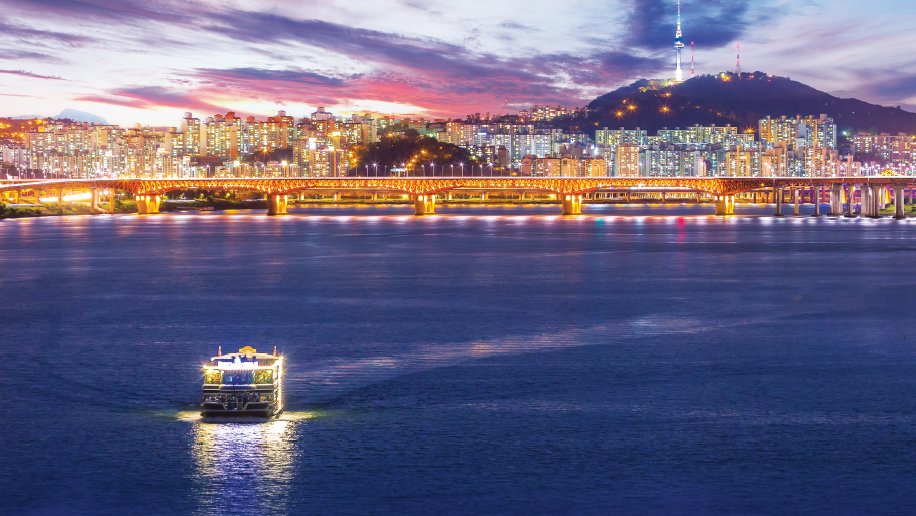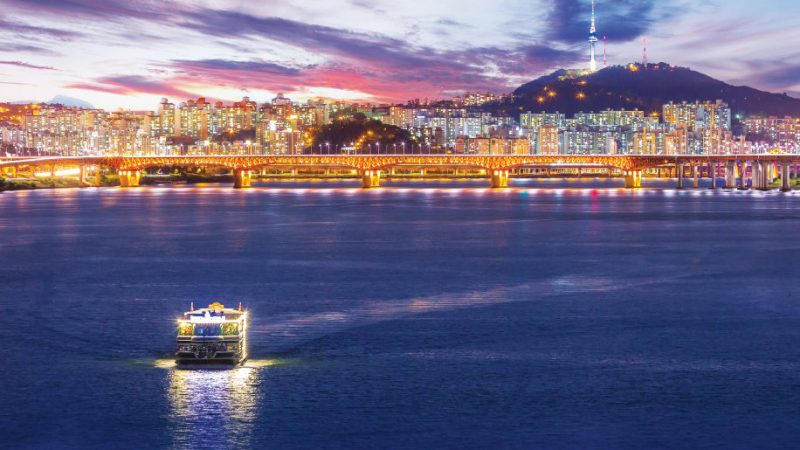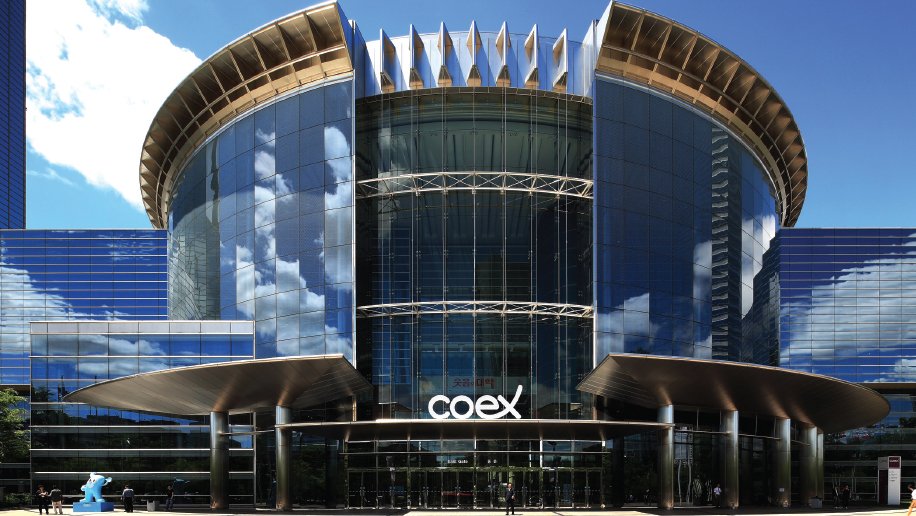Seoul
City of Wisdom, City of Wonders
July 15, 2020


City of Innovations
In these uncertain times, if you want to have a meeting or conference, or want to spend time in a safe place and not hampered by fears of Coronavirus exposure, Antarctica might be just the spot. But if you are not up for icebergs, penguins and a cold quarantine concept that spans an entire continent, then Seoul may be the next best bet. The world class city has much to offer: safe social practices, smart infrastructure systems, fantastic food, and colorful experiences all appealing to both business and leisure travelers alike.

Leading the Charge Against COVID-19
Unlike other major metro centers around the globe, Seoul moved ahead of the Coronavirus pandemic long before the disease got the upper hand. In fact, Korea has been a model for cities and countries seeking advice as weakened medical systems buckle under the weight of ongoing corona-related admissions and deaths.
The country adopted a massive, variegated approach to tamping down the contagion, with aggressive testing and contact-tracing, near-universal use of masks, serious social distancing practices, and the quick closing of localized hot spots. Benefitted by steady leadership that emphasizes a science-based, collective response to the pandemic, the Korean populace has been lauded for quick adoption and cooperation as protective practices continue to pivot.
Korea has made testing options widely available, if not mandatory, for residents and visitors and as new cases have continued to slow, an efficient public health system has been busy designing and deploying spatial protections to allow restaurants to open and stores to operate with comfortable measures of safety.
Testing, Tracing, Treatment, Trust and Transparency
As most of the world continues to grapple with the delicate balance between stemming exposure to COVID-19 and trying to live the semblance of a normal life, Korea has been busy innovating ways to test more people faster while limiting contact with medical personnel. These measures have included opening more Drive-Thru test centers and, more recently, Walk-Thru centers were introduced. At the same time, testing times were cut in half and contact tracing was improved – so much so that by the end of May, nearly a million tests had been performed and fatalities had been counted at fewer than 300. On average, Korea, a country of some 51 million people, can test 20,000 individuals per day and have the results by the next morning. Impressive – even by Western standards.
As Seoul gets on its feet and stays anchored there, city officials are well aware of the potential for new waves of cases and are taking proper precautions. At the same time, however, that K-pop beat that is in the city’s DNA continues to pulse. People gather in open air cafes for tasty Korean BBQ. The city’s massive malls are open and thriving. Metro connections run on time; hotel lobbies team with guests; temples and attractions welcome visitors, and international meetings are coming back.
But do not be surprised if that cappuccino you ordered is brewed and delivered by a robot. South Korea remains a gaga fan and world manufacturing hub for forward facing electronic gadgets. Where there is a need, or even if there is not, there is an innovative solution in the works somewhere in Seoul.
Meeting the Challenge: Seoul Convention Bureau
PLUS SEOUL Support
Making meetings all that much more simple, efficient and safe is the Seoul Convention Bureau with its PLUS SEOUL support program. The core value is to have supports in place that best fit the needs of the event planners and participants. This essential mission is behind PLUS SEOUL’s Infection-free Zone and Reassuring Program, all set and ready to welcome international MICE participants.

The hygiene procedures and safety measures to prevent transmission have become up-front protocols. The Infection-free Zone provides disinfecting services along with thermal imaging cameras, touchless thermometers, and basic PPEs such as facial masks and hand sanitizers.
The Seoul Convention Bureau developed the PLUS SEOUL and its Reassuring Program as a way to provide comfort and care to MICE participants through their entire visit. From arrival to departure, MICE participants and event planners need not worry about such details as insurance protection, emergency medical response, or even language services.
Currently, only the international conference attendees are eligible for these supports, but these will be extended to all MICE participants in near future.
Seoul is actively preparing for the era after the COVID-19. And so is Seoul Convention Bureau. As the world moves into a Post-Covid new normal – a daily existence for all with inherent elements of risk –Seoul is on the frontier, forging new technologies and adaptations for a future that must go on.
Meetings of any size – from mega conferences of 10,000 to small incentive summits and training gatherings of fewer than 100 attendees, Destination Seoul simply makes sense. The stable democracy that is South Korea is located within easy reach of Japan, China, Taiwan and Singapore and Seoul is at the ready with a healthy selection of business and luxury hotels, a tuned up transportation system, one of the world’s top international airports at Incheon and a spanking clean and vibrant city that is both safe and smart.
Consider this: Seoul, a city of 10 million people, has six large and established convention centers ready to host sizable gatherings that require having turn-key services in place.
A Bounty of Brilliant Venues
Meetings Made to Measure
aT Center brings two exhibition halls that, with more than 86,000 square feet of exhibition space, can manage 382 booths. Specialized facilities include an Agro-Trade Information Center and an export support pavilion for one-stop mediation services for foreign buyers. Also find three restaurants, a café and convenient supply shops.

COEX is a central landing space that brings some 400,000 square feet of exhibition space and nearly five million square feet of floor area with four halls that can be pared into a dozen separate meeting spaces. All 54 conference facilities are equipped with the latest in presentation amenities and infrastructures made to order for the MICE industry. The location is a direct stop on an expansive metro and rapid transit system and offers an express connection to and from Incheon International Airport. Thirty hotels can be accessed within a three-mile radius to COEX, which connects on the spot to a popular underground shopping mall of boutiques and restaurants. For those who need some air and culture, the Bongeunsa Buddhist Temple is directly across the street and presents gardens, peaceful corners for personal time and meditation sessions for those who ask.
63 Convention Center towers over the Hangang River in the southern end of the city. The design-forward building was the tallest building outside North America when it opened in July 1985. Today, it still houses the world’s highest art gallery and offers an observation deck where visitors can see all the way to Incheon on clear days. The 59th floor features international restaurants and the elevators offer windows over Seoul for a riveting ride up or down the tower. The second floor Grand Ballroom is a popular party hall for expansive events that can service up to 2,000. The space offers a stage and a dedicated elevator for all the necessary props.
SETEC is another conference and exhibition space sized for small to medium enterprise (SME) trades. The location features three exhibition halls and four meeting rooms amid its 372,431-square-foot layout.
Sejong University Convention Center is located on the Sejong University campus on four levels underground in the Gwanggaeto building. A burgeoning banquet hall can seat 2,700 for a mega-event or the location can cater to small, intimate affairs with six small and medium spaces. Also find there an exhibition hall, a concert hall and guest rooms. Events at Sejong make use of the university’s hospitality and tourism management department and also bring in international chefs from five-star hospitality backgrounds, all in a setting that captures a calm college campus feel with parks, forests and mountains in the background.
Meetings Meet the Future in Seoul
Other attractions that create wonder around technology and futuristic concepts in Seoul include SK Telecom, a telecommunications company steeped in advanced technological innovations and featuring a museum-like space named T.um. A tour one can take in groups of ten with a docent might rocket children into the frontiers of imagination, but this tour is just as wondrous for adults. As an example, it creates a complete interior environment some 30 years in the future with glimpses into what earth-bound transportation will be like at that time.
Samsung also has a studio demonstrating how electronics change the lives in the future: Samsung d’light. Visitors of all ages move from one environment to the next finding worlds where objects can move on their own; where devices analyze behaviors and surroundings; where smart homes are automatically inventoried for needed supplies; where classrooms are assisted by smartboards; where shopping is completely personalized, medical conditions are managed on the go, and lifestyles are enhanced by an ongoing and ever more sophisticated menagerie of wearables.

Futuristic travels can depart from industrial and technoloy tours to design backgrops that make great venues for MICE events while at the same time are quite appealing to shoppers. Such is Dongdaemun Design Plaza. The artworks and architecture are the work of Zara Hadid, globally famous for her futuristic design, in a location that is minutes from Seoul’s historic palaces and temples. It was designed to be a cultural hub as well as an attraction that would become Korea’s largest fashion district. The reflective undulating surfaces of this otherworldly shopping arena resemble the flow of liquid. It is also an ecological marvel with a double-skin facade, solar panels, and built-in water recycling system.
Similarly, Seoul City Hall creates a clash of future and past as the original 1925 Imperial Crown-style edifice is enveloped into the 2012 structure of glass and curves. It’s location is in Taepyeongno, Jung-gu directly across from palaces and historical sites.
A Walk along Cheonggyecheon Stream
Cheonggyecheon is a 6.7-mile-long stream that runs the boundary between Jongno-gu and Jung-gu in downtown Seoul, offering a unique blend of ecology and culture. Formerly part of a road and overpass system, the deteriorated structures were removed in 2000 to restore the stream and preserve the environment and its history. During a quiet stroll, the casual ambler will find 22 quaint bridges, waterfalls, and a “Wall of Hope” holding the expressed wishes of Seoulites giving this natural feature some magical qualities. Mini concerts, art exhibitions and a variety of other cultural events happen here and there along the stream’s path. The scene becomes dazzling at night when soft lighting illuminates the course. Cheonggyecheon comes alive in November as the Seoul Lantern Festival lights up the stream with hundreds of colorful lanterns.

Nodeulseom Island for Music, Nature and Culture
A visit to Nodeulseom Island brings nature, music, books, and relaxation. Located on the Hangang River, it is accessed by the Hangangdaegyo Bridge that connects Dongjak-gu and Yongsan-gu, and cuts through the center of the island. Befitting its tagline, “A Music Island with a Cultural Complex,” Nodeulseom features creatively designed cultural and commercial spaces such as Live House, a pop concert hall; nTable, where varieties of food are created;Plant Island for a pleasant experience of landscapes and flora; and Nodeul Book Store, a favorite place for lovers of literature and books. Nodeul Madang, a large lawn of more than 32,000 square feet, is a perfect place to picnic and maybe catch an open-air concert or performance. Nodeul Forest is a preservation spot that features a special habitat for toads. It’s a place that can be set up for buzz-worthy meetings and seminars, or where one could come to enjoy a yoga session on the grass during a breakout session.
Serenity in Seokchon Lake Park
Seokchon Lake Park is an expansive lake park in Songpa-gu. Find the most serene spot at East Lake or head to West Lake to mix with bustling crowds headed to Lotte World and Seoul Playground. Catch the Cherry Blossom Festival here in mid to late April as a thousand cherry blossom trees become a sweet smelling tunnel of pink and white blooms along the walking trail. The lakeside area is near restaurants, cafes, and other amenities, as well as Lotte World and Lotte World Tower, making it a favorite spot for a break or a friendly stroll. Sky Convention 31 on the 31st floor of Lotte World Tower by the lake offers a full view of this natural expanse. Lotte World Tower is the tallest building in Seoul and offers stunning 360-degree views of the city from the observatory on the top floor.
Sampling Seoul’s Ancient Wonders
Visitors easily can dig into Seoul’s deep history and extraordinary culinary culture with these explorations.
To start, the Five Grand Palaces of Seoul will give the traveler a deep look at the history of the Joseon Dynasty that ruled the Korean Peninsula for over 500 years, from 1392 to 1910. Don’t miss:
Gyeongbokgung Palace was built in 1395 and served as the main royal palace of the Joseon Dynasty for most of its history. Changdeokgung Palace is now a UNESCO World Heritage Site and possibly the most beautiful of the Five Grand Palaces of the Joseon Dynasty. Bukchon Hanok Village is an experience of traditional Korean style residential architecture. Hanyangdoseong – Seoul City Walls, an 11.5-mile-long wall around the Joseon capital of Hanyang (the old name for Seoul), is accessible and walkable and has remained in its original form for more than 600 years. Jinkwansa is a centuries-old Buddhist temple located in Bukhansan National Park and is run by female Buddhist monks or nuns. The temple is in a valley protected by mountains – a quiet place to retreat between meetings, or even visit for a temple stay.

Sampling Korean Food in Seoul
Traditional Korean food, known as “hansik,” centers on rice, usually served with a bowl of soup and a variety of side dishes and accents. Expect meat and vegetables as the main ingredients, boiled or steamed in brine or water rather than fried in oil. A most notable feature of hansik cuisine is the addition of fermented foods – most common among these are kimchi (fermented cabbage), ganjang (soy sauce), doenjang (soybean paste), and gochujang (Korean chili paste).
Popular dishes to sample include bulgogi, bibimbap, and hanjeongsik (Korean table d’hote). Bulgogi is a marinated beef or sometimes pork dish that is sweet and tender in texture. Bibimbap, can be a complete meal with rice and all manner of vegetables and topped with gochujang for that extra kick. Hanjeongsik is a veritable buffet of side dishes featuring meat and vegetables along with soups, steamed foods, and hot pots – a great choice for an intro into a true hansik experience.
A Place to Taste
Gwangjang Market, Korea’s first permanent market, is open every day as it has been for 110 years. It is popular as a food alley sporting a variety of delicious, cheap food items. The market grew even more robust after “Running Man,” a popular TV variety show in Asia, used the market as a backdrop. Must-try dishes include bindaetteok, ground mung beans made into a batter that is then pan-fried with lots of cooking oil; kimbap (a “highly addictive” sushi-like snack) served with a mustard dipping sauce; and, of course, there are plenty of bibimbap variations to try.
Following a mouthwatering tour of the market, spend some time looking around Jongno, Jongmyo, Changgyeonggung, and Cheonggyecheon Stream, all nearby. A tour here could be organized as a fun and adventurous teambuilding activity supported through explanations and background information on the cuisine. For those who like to dig in with their hands (and spoons) cooking classes bring bonding with new ingredients and new tastes.




